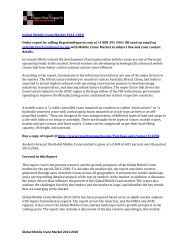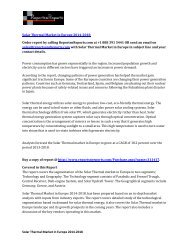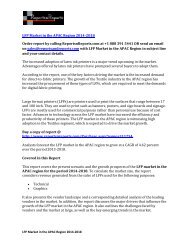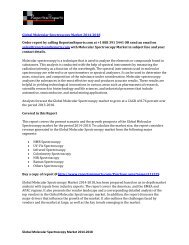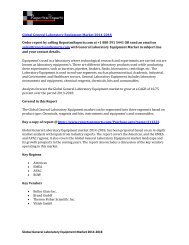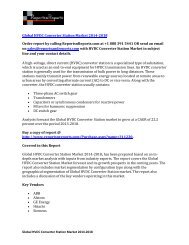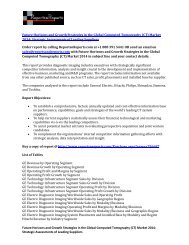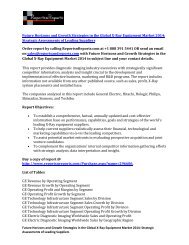China Smartphone Industry Shipment Volume Expected to Reach 104.2 Million Units
This report presents a recent review of the Chinese smartphone industry in the second quarter of 2014. The report includes shipment volume of major smartphone branded vendors in China, breakdowns of each vendor's shipment volume share by chipset maker, application processor model, ASP, panel size, camera pixel, resolution, as well as 3G and 4G technologies. The report also examines major chipset makers' product mix for smartphones sold in China. The report finds that the Chinese smartphone industry's shipment volume reached 104.2 million units in the second quarter of 2014, up 17% sequentially, with a total number of 560 models launched during the quarter. Low-cost models were the majority—over 85% of the smartphones sold in China were priced below 2,000 RMB (US$325.7; US$1=6.141 RMB). With the Chinese government's issuance of 4G licenses to telecom operators, 4G-enabled smartphones were gaining steam, taking up around 25% of all smartphones shipped in the past three months ended in June. In terms of vendor's shipment ranking, Xiaomi leapfrogged its rivals into the leading position, followed by Lenovo and Samsung. Overall, top five vendors collectively shipped around 60% of the smartphones in China. Apple's shipment share fell to below 5% in this quarter, with its ranking falling from the fourth place to the seventh. The launch of new iPhone in September is anticipated to be a game changer. Companies covered Apple, AUX, BBK, Bird, Broadcom, Coolpad, Doov, Gionee, Google, Hisense, Hisilicon, HTC, Huawei, Intel, Konka, Koobee, K-Touch, Leadcore, Lenovo, Marvell, MediaTek, Meizu, Nokia, Nvidia, Oppo, Qualcomm, Samsung, Spreadtrum, TCL, Xiaomi, Yusun, ZTE. Buy a copy of report @ http://www.reportsnreports.com/Purchase.aspx?name=297429.
This report presents a recent review of the Chinese smartphone industry in the second quarter of 2014. The report includes shipment volume of major smartphone branded vendors in China, breakdowns of each vendor's shipment volume share by chipset maker, application processor model, ASP, panel size, camera pixel, resolution, as well as 3G and 4G technologies. The report also examines major chipset makers' product mix for smartphones sold in China. The report finds that the Chinese smartphone industry's shipment volume reached 104.2 million units in the second quarter of 2014, up 17% sequentially, with a total number of 560 models launched during the quarter. Low-cost models were the majority—over 85% of the smartphones sold in China were priced below 2,000 RMB (US$325.7; US$1=6.141 RMB). With the Chinese government's issuance of 4G licenses to telecom operators, 4G-enabled smartphones were gaining steam, taking up around 25% of all smartphones shipped in the past three months ended in June. In terms of vendor's shipment ranking, Xiaomi leapfrogged its rivals into the leading position, followed by Lenovo and Samsung. Overall, top five vendors collectively shipped around 60% of the smartphones in China. Apple's shipment share fell to below 5% in this quarter, with its ranking falling from the fourth place to the seventh. The launch of new iPhone in September is anticipated to be a game changer.
Companies covered
Apple, AUX, BBK, Bird, Broadcom, Coolpad, Doov, Gionee, Google, Hisense, Hisilicon, HTC, Huawei, Intel, Konka, Koobee, K-Touch, Leadcore, Lenovo, Marvell, MediaTek, Meizu, Nokia, Nvidia, Oppo, Qualcomm, Samsung, Spreadtrum, TCL, Xiaomi, Yusun, ZTE.
Buy a copy of report @ http://www.reportsnreports.com/Purchase.aspx?name=297429.
Create successful ePaper yourself
Turn your PDF publications into a flip-book with our unique Google optimized e-Paper software.
It is also worth noting that the share of telecom opera<strong>to</strong>rs' cus<strong>to</strong>m-made models was on the<br />
decline, indicating the growing influence of traditional distribution channels and online<br />
sellers on the open market. Xiaomi is one of the successful s<strong>to</strong>ries of online smartphone<br />
sellers while BBK (VIVO) and OPPO, both witnessed rapid growth in shipment share in the<br />
second quarter, rely on conventional sales channels <strong>to</strong> sell smartphones featuring mid-tier<br />
<strong>to</strong> high-end specifications with a price tag between 1,500 RMB <strong>to</strong> 2,000 RMB (US$244.3 <strong>to</strong><br />
US$325.7).<br />
Single User Licens: US $2800; Inquire for Discount @<br />
http://www.reportsnreports.com/contacts/Discount.aspx?name=297429.<br />
Despite a close margin in their shipments, Chinese brands, such as Xiaomi, Huawei, Lenovo,<br />
Coolpad, ZTE, BBK, and OPPO have been on the rise. Back in 2013, the biggest domestic<br />
players in the Chinese market were Lenovo, Huawei, Coolpad, ZTE, whose emergence were<br />
largely attributed <strong>to</strong> their contract manufacturing business for telecom opera<strong>to</strong>rs' cus<strong>to</strong>mmade<br />
models. Today, former contract manufacturers (Lenovo, Huawei, Coolpad, ZTE),<br />
online seller (Xiaomi), and brands relying on conventional sales channels (BBK and OPPO)<br />
all have established their foothold in the Chinese market. This trend has shown that the<br />
market is concentrating <strong>to</strong>ward vendors who have distinctive features. For example, BBK<br />
and OPPO have launched large-scale marketing campaigns <strong>to</strong> promote smartphones having<br />
mid-range <strong>to</strong> high-end specifications; Huawei are packing its high-end phones with<br />
Hisilicon processors as a unique selling point; Xiaomi is extending its reach from online<br />
platform <strong>to</strong> cus<strong>to</strong>m-made models for telecom opera<strong>to</strong>rs. In short, Chinese smartphone<br />
brands are seeking <strong>to</strong> create differentiation in order <strong>to</strong> prepare for the fierce competitions<br />
in the future.<br />
Chinese <strong>Smartphone</strong> <strong>Industry</strong>, 2Q 2014




